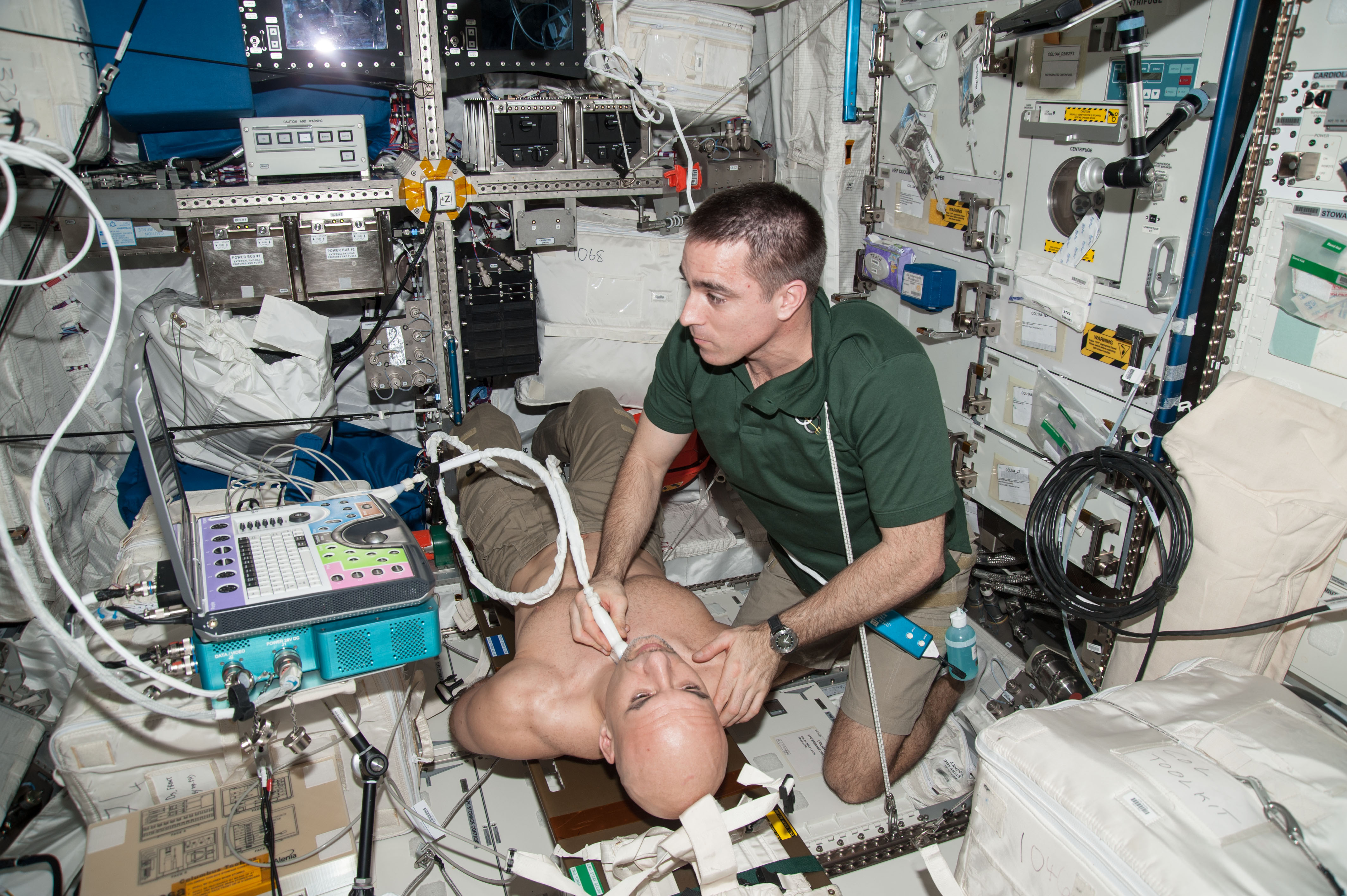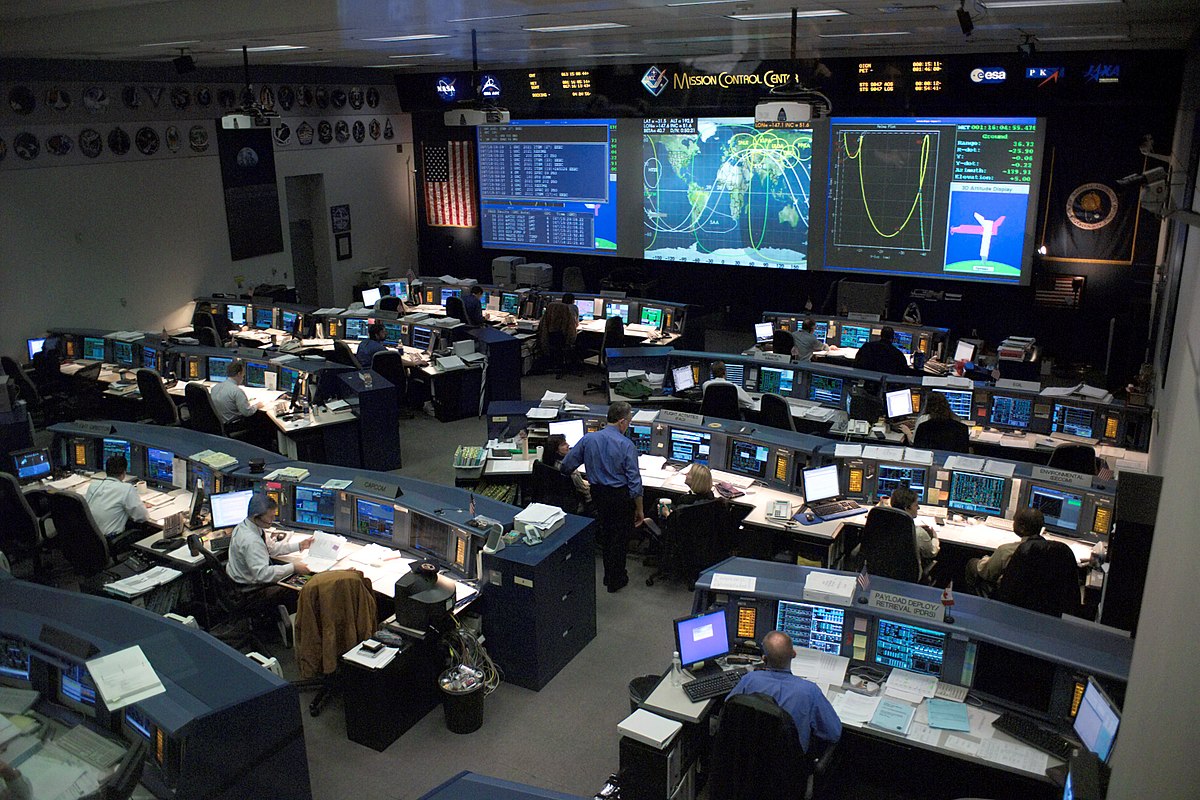
KBR Wins $2.5 Billion NASA Contract for Astronaut Health Services Through 2035
The Decade-Long Bet: KBR's $3.6 Billion Space Medicine Franchise
How NASA's Largest Human Health Contract Reveals the True Infrastructure of Deep Space Ambitions
HOUSTON — NASA has awarded KBR a $2.459 billion contract to manage astronaut health and performance across the agency's most critical programs, from International Space Station operations to the Artemis lunar missions. The five-year agreement, which could expand to $3.6 billion through 2035 with optional periods, represents one of the largest single-contractor commitments in NASA's human spaceflight portfolio.
The Human Health and Performance Contract 2 consolidates medical support services that span multiple NASA programs, including the International Space Station, Commercial Crew Program, and the Artemis campaign aimed at returning humans to the Moon. The contract begins November 1, with the majority of work performed at Johnson Space Center in Houston.
For investors analyzing aerospace opportunities, the award signals NASA's recognition that sustained human space exploration requires dedicated medical infrastructure as sophisticated as launch systems themselves. The contract positions KBR as the primary steward of astronaut wellness during an era when missions will extend from months to potentially years, creating unprecedented demands on human physiology.
The Architecture of Biological Resilience
Within the antiseptic halls where astronauts train for missions measured in years rather than days, the contract's significance becomes visceral. KBR's medical specialists now oversee everything from bone density monitoring protocols that prevent skeletal deterioration in microgravity to psychological support systems designed for crews who will experience months of isolation during Mars transits.
Microgravity significantly impacts the human body, leading to physiological changes like spaceflight osteopenia, a condition characterized by the loss of bone density. Astronauts can also develop Spaceflight Associated Neuro-ocular Syndrome (SANS), which may cause vision problems.
The institutional knowledge required defies typical government contracting cycles. Consider the complexity of a single medical protocol: monitoring astronaut vision changes during long-duration missions requires understanding accumulated fluid shifts, intracranial pressure variations, and genetic predispositions that manifest differently in microgravity. This expertise, cultivated through KBR's decade-long stewardship since 2015, cannot be readily transferred between contractors without risking crew safety.

"The human body becomes the most sophisticated and fragile spacecraft component," explained one aerospace medical researcher who requested anonymity due to contractual restrictions. "Every physiological system requires monitoring, countermeasures, and contingency protocols that take years to perfect."
The scale emerges in granular detail: KBR will coordinate health operations for an estimated 200-300 astronaut mission years through 2035, encompassing not merely American crew members but international partners whose medical data must integrate seamlessly across different space agencies' protocols.
Strategic Convergence at Civilization's Edge
The timing reveals NASA's navigation of unprecedented complexity. The agency simultaneously manages ISS operations through 2030 while preparing Artemis crews for radiation environments and psychological isolation that dwarf Apollo program experiences. Commercial space stations from Axiom Space and Blue Origin will require medical frameworks that extend beyond traditional government astronaut populations, potentially serving hundreds of commercial space workers annually.

Artemis missions will subject human physiology to stresses the brief Apollo lunar visits could not reveal. Extended lunar surface operations, combined with deep space radiation exposure during transit phases, demand medical research and countermeasures that bridge current ISS experience with eventual Mars mission requirements. The Moon becomes humanity's first extraterrestrial medical laboratory.
The integration of Leidos as named subcontractor adds strategic depth, merging KBR's operational expertise with advanced data analytics and predictive health monitoring capabilities. This partnership suggests NASA's vision extends beyond reactive space medicine toward autonomous diagnostic systems capable of supporting crews operating months from terrestrial medical intervention.
For communities surrounding Johnson Space Center, the contract represents economic stability in an industry characterized by political volatility. Houston's aerospace workforce, from biomedical engineers to flight surgeons, gains decade-long employment certainty rare in government contracting.
Investment Topography of the Final Frontier
Analyzing this development through investment lens reveals implications extending beyond immediate financial impact. The single-award structure creates a decade-long competitive moat around space medicine services, potentially establishing KBR as gatekeeper for emerging technologies seeking NASA integration.
KBR's Mission Technology Solutions segment generated $5.56 billion in 2024 revenue with margins approaching 10%. The NASA contract could contribute approximately $350-500 million annually once fully operational, representing nearly 9% of segment revenue with potentially superior margins due to space medicine's specialized requirements and cost-plus contract structure.
Table: KBR Government/Mission Solutions Segment Revenue (2018–2024) in million USD
| Year | Revenue (in million $) |
|---|---|
| 2018 | 2,473 |
| 2019 | 3,930 |
| 2020 | 3,934 |
| 2021 | 6,100 |
| 2022 | 6,550 |
| 2023 | 7,000 |
| 2024 | 5,871 |
More strategically, the contract positions KBR as primary conduit for space health innovation. Biotechnology firms developing autonomous surgical devices, pharmaceutical companies researching microgravity drug manufacturing, or software companies creating psychological support systems for isolated crews must essentially partner with KBR to access NASA programs.
A cost-plus contract is an agreement where a contractor is reimbursed for all allowable expenses, plus an additional fee that represents their profit. Unlike a fixed-price contract, this model offers flexibility for projects with uncertain scopes but places the risk of cost overruns on the buyer.
This creates cascading investment opportunities across companies developing extreme environment technologies, miniaturized medical devices, and remote monitoring systems serving both space and terrestrial applications. The technologies enabling astronaut health in deep space—radiation countermeasures, closed-loop life support, autonomous diagnostics—find immediate applications in submarine operations, polar research stations, and disaster response scenarios.
Economic Ecosystems Beyond Earth's Gravity
The contract reflects NASA's evolution from transportation-focused agency toward infrastructure provider for sustained human space presence. Just as the agency once developed launch capabilities that enabled commercial satellite industries, it now constructs medical frameworks supporting broader space commercialization.
Commercial space station operators face identical challenges to NASA: maintaining crew health during extended microgravity exposure. Axiom Space's commercial modules, scheduled for ISS integration before independent operation, will require medical support systems matching or exceeding current ISS capabilities. KBR's contract positions the company to extend these services commercially, potentially multiplying addressable market size.

The pharmaceutical industry represents another convergence point. Microgravity research aboard commercial platforms could accelerate drug development timelines, enabling protein crystal growth and tissue engineering impossible under terrestrial gravity. However, such research requires sophisticated medical monitoring and safety protocols that KBR now controls institutional knowledge to provide.
Manufacturing in space—from fiber optics to advanced alloys—may eventually employ thousands of workers in orbital facilities. Each requires comprehensive medical support infrastructure that extends KBR's potential market far beyond current astronaut populations.
Navigating Uncertainties in an Infinite Ocean
Despite strategic positioning, several factors could constrain ultimate contract value. Artemis mission schedules face persistent technical delays and political budget uncertainties. The program's ambitious timeline of lunar base establishment by 2030 confronts engineering challenges that could extend mission intervals and reduce medical services demand.
Congressional appropriations present ongoing volatility. While the contract provides framework authority, actual task orders depend on annual NASA budgets vulnerable to shifting political priorities. Recent continuing resolutions demonstrate how budget instability can throttle even high-priority programs, potentially leaving contract capacity underutilized.
Table: NASA Annual Budget from 2010 to 2024 Adjusted for Inflation (in Million 2024 USD)
| Year | Nominal Budget (Million USD) | Inflation-Adjusted Budget (Million USD, 2024) |
|---|---|---|
| 2010 | 18,724 | 26,999 |
| 2011 | 18,448 | 25,786 |
| 2012 | 17,770 | 24,338 |
| 2013 | 16,865 | 22,765 |
| 2014 | 17,647 | 23,439 |
| 2015 | 18,010 | 23,891 |
| 2016 | 19,300 | 25,286 |
| 2017 | 19,508 | 25,025 |
| 2018 | 20,736 | 25,965 |
| 2019 | 21,500 | 26,442 |
| 2020 | 22,629 | 27,409 |
| 2021 | 23,271 | 27,003 |
| 2022 | 24,041 | 25,832 |
| 2023 | 25,384 | 26,196 |
| 2024 | 24,875 | 24,875 |
Competition from specialized biotechnology firms poses longer-term disruption potential. As space medicine matures, companies with revolutionary AI diagnostics or breakthrough countermeasures might challenge KBR's position, particularly if NASA chooses competitive task orders rather than sole-source reliance on prime contractors.
The Infrastructure of Human Expansion
Investment strategists examining this contract should recognize its role establishing foundation for sustained space economy. Early aviation required development of weather services, air traffic control, and safety protocols before supporting mass transportation. Similarly, permanent human space presence demands medical infrastructure supporting thousands rather than dozens of space workers.
Astronauts in deep space face constant exposure to two primary forms of radiation: high-energy galactic cosmic rays (GCRs) from distant cosmic events and intense bursts from solar particle events (SPEs). This prolonged exposure poses severe health risks, including an increased lifetime risk of cancer and potential damage to the central nervous system.
The $3.6 billion represents NASA's investment in that foundation, with KBR positioned as both primary operator and institutional memory keeper. Companies developing complementary technologies—advanced radiation shielding materials, closed-loop life support systems, autonomous surgical robotics—may find market access requires partnerships with KBR's established programs.
For portfolio construction, the contract suggests emphasizing companies with exposure to long-duration space operations rather than pure transportation focus. Medical device manufacturers with space-qualified products, materials companies developing radiation countermeasures, and software firms building autonomous health monitoring systems all benefit from frameworks KBR now administers.
The ultimate validation unfolds over coming years, as Artemis missions demonstrate whether NASA's comprehensive human health infrastructure proves essential for sustainable space operations. Success could establish KBR's contract as foundational investment enabling humanity's expansion beyond Earth orbit. Extended delays or budget constraints risk expensive hedging against uncertain timelines.
What emerges clearly is NASA's treatment of astronaut health as critical infrastructure rather than program cost—recognition that the final frontier's greatest challenges may prove biological rather than technological. In the sterile corridors of Johnson Space Center, where human bodies prepare for journeys beyond all evolutionary precedent, the future of space exploration increasingly depends on understanding ourselves as much as the cosmos we seek to inhabit.
NOT INVESTMENT ADVICE